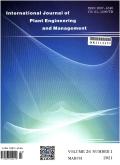Multi-Diversity for FPGA Platform Based NPP I&C Systems: New Possibilities and Assessment Technique
International Journal of Plant Engineering and Management
Pub Date : 2018-07-22
DOI:10.1115/ICONE26-82377
引用次数: 2
Abstract
Diversity approach is used to decrease risk of common cause failure (CCF) of Nuclear Power Plant (NPP) Instrumentation and Control systems (I&Cs). Application of a multi-diversity, i.e. a few different types of version redundancy allows minimizing CCF risk. On the other side, implementation of diversity increases cost and complicates maintenance of multi-version I&Cs. Hence, it is important to find optimal solution according with criteria “required level of diversity (safety) / minimal cost and maintenance complexity. Modern FPGA technology creates additional possibilities to meet requirements of the standards (such as NUREG/CR-7007, IEEE Std 7-4.3.2-2016, IAEA SSR-2/1:2016, IAEA NP-T-3.17:2016 and others) by developing main and diverse subsystems on the basis of the same FPGA platform. Existing diversity normative base should be enhanced in three directions — scope, depth and rigor to provide more detailed description of possible applied techniques and tools for quantitative assessment. The goals of the paper which overviews practical issues of diversity application are the following: - present extended classification of diversity considering additional types of version redundancy for FPGA platform based I&Cs (logical processing equipment, life cycle, logic/algorithm etc.) in comparing to NUREG7007; - describe the modified technique of diversity assessment taking into account three and more levels of diversity classification; - illustrate and discuss variants of assurance of the required degree of diversity by use of the RadICS FPGA platform to develop main and diverse subsystems. The classification is specified considering diversity of hardware and FPGA designs. In particular, diversity of hard logic and soft processors, interfaces and buses, self-diagnostics means and others are described and embedded into NUREG/CR-7007 classification. The NUREG7007-based diversity assessment techniques supporting all stage of analyzing options are discussed, and algorithms for versions choice are described. This technique takes into account more detailed specification of diversity classification (for types, subtypes and sub-subtypes of diversity for logic diversity, logic processing equipment diversity and others) and options to evaluate weight coefficients. Case study is based on description of two options of RadICS FPGA platform application to develop two-version NPP I&C, which meets standard requirements to diversity.基于FPGA平台的NPP I&C系统的多分集:新的可能性和评估技术
采用多样性方法降低核电站仪表与控制系统的共因故障风险。应用多重分集,即几种不同类型的版本冗余,可以最大限度地减少CCF风险。另一方面,多样性的实施增加了成本,使多版本i&c的维护变得复杂。因此,根据“所需的多样性(安全)水平/最小成本和维护复杂性”标准找到最佳解决方案非常重要。现代FPGA技术通过在同一FPGA平台上开发主要和不同的子系统,为满足标准要求(如NUREG/CR-7007, IEEE标准7-4.3.2-2016,IAEA SSR-2/1:2016, IAEA NP-T-3.17:2016等)创造了更多的可能性。应从广度、深度和严谨性三个方面加强现有多样性规范基础,为定量评估提供更详细的可能应用技术和工具。本文概述了分集应用的实际问题,其目标如下:-与NUREG7007相比,考虑到基于FPGA平台的i&c(逻辑处理设备、生命周期、逻辑/算法等)的额外类型的版本冗余,提出了分集的扩展分类;-描述考虑到三个或更多层次的多样性分类的改进的多样性评估技术;-说明和讨论通过使用RadICS FPGA平台开发主要和多样化子系统来保证所需多样性程度的变体。考虑到硬件和FPGA设计的多样性,对其进行了分类。特别是,硬逻辑和软处理器、接口和总线、自诊断手段等的多样性被描述并嵌入到NUREG/CR-7007分类中。讨论了基于nureg7007的多样性评估技术支持所有阶段的分析选项,并描述了版本选择的算法。该技术考虑到更详细的分集分类规范(用于逻辑分集、逻辑处理设备分集和其他分集的类型、子类型和子子类型)和评估权重系数的选项。通过对RadICS FPGA平台的两种选择的描述,开发了两种版本的NPP I&C,满足了标准对多样性的要求。
本文章由计算机程序翻译,如有差异,请以英文原文为准。
求助全文
约1分钟内获得全文
求助全文

 求助内容:
求助内容: 应助结果提醒方式:
应助结果提醒方式:


